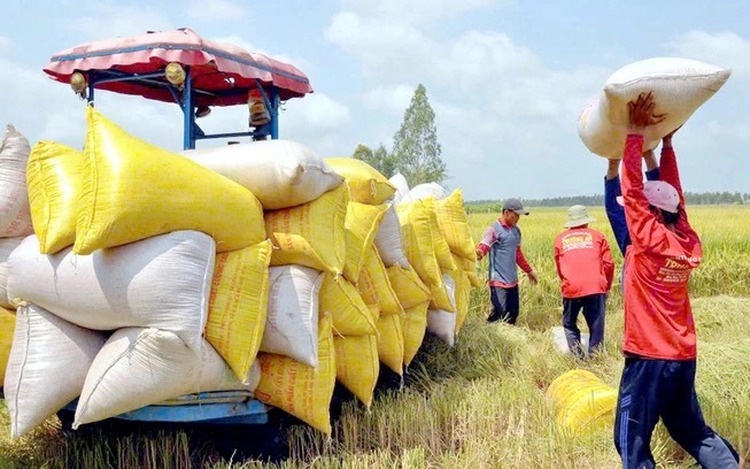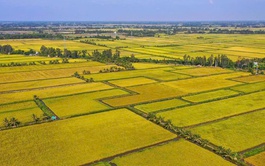
Farmers harvest rice in a paddy field in Vietnam. Photo: T.L. / Tuoi Tre
India triggered the global price slide on July 31 by announcing the release of up to 20 million metric tons of rice from national reserves, the country’s largest release on record.
The rice was distributed across three channels: 7.5 million metric tons through electronic auctions, 5.2 million for ethanol production, and 3.6 million sold to Indian states at around US$257 per metric ton.
The move was aimed at easing domestic prices and reducing excess stock. Its effect was immediate.
Export prices from Thailand and Pakistan fell $10-15 per metric ton, and Indian rice prices also dropped.
Thailand’s five-percent broken white rice fell to about $362 per metric ton, its lowest point since 2017 and nearly 30 percent lower than in late 2024.
By contrast, Vietnam’s five-percent broken rice rose $4 to reach $395 per metric ton.
Thai, Pakistani, and Indian rice of similar grades sold for $362, $365, and $379 per metric ton, respectively, giving Vietnamese rice a premium of $16-33 per metric ton over its competitors.
Exporters say part of the recent demand came from the Philippines, which has been importing ahead of a planned 60-day suspension on rice imports starting September 1 to support local farmers.
The ban may disrupt future orders but will not fully halt trade with Vietnam, which remains the Philippines’ top rice supplier.
According to the VFA, India’s release does not directly impact Vietnam’s rice prices because the two countries serve different market segments.
Vietnam’s focus on high-value exports shields it from direct competition with India’s mass-market rice.
Vietnam’s ability to maintain strong prices is credited to its diversified product lineup, growing share of fragrant and specialty varieties such as ST, DT, and OM, and expanded export markets.
Free trade agreements have boosted the country's access to Asia, Africa, and the Middle East.
In the first half of 2025, Vietnam doubled rice exports to Ivory Coast and raised shipments to Ghana by more than 50 percent compared to the same period last year.
Exports to China increased 80 percent in value.
If Vietnam continues to expand markets, maintain quality, and take full advantage of trade agreements, it is on track to remain the world’s second-largest rice exporter in 2025, just behind India, the VFA said.



Max: 1500 characters
There are no comments yet. Be the first to comment.